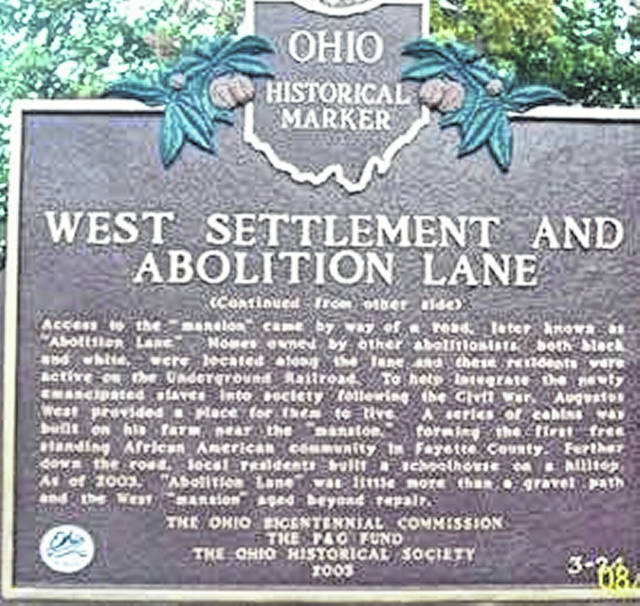
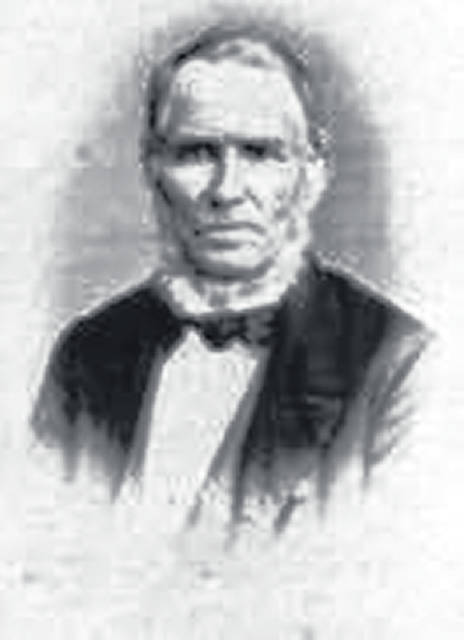
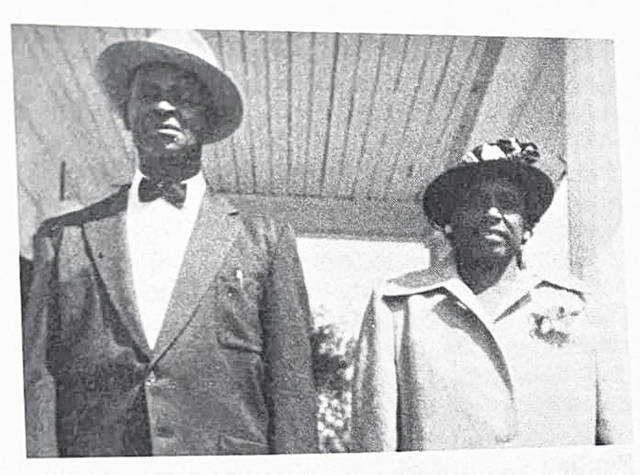
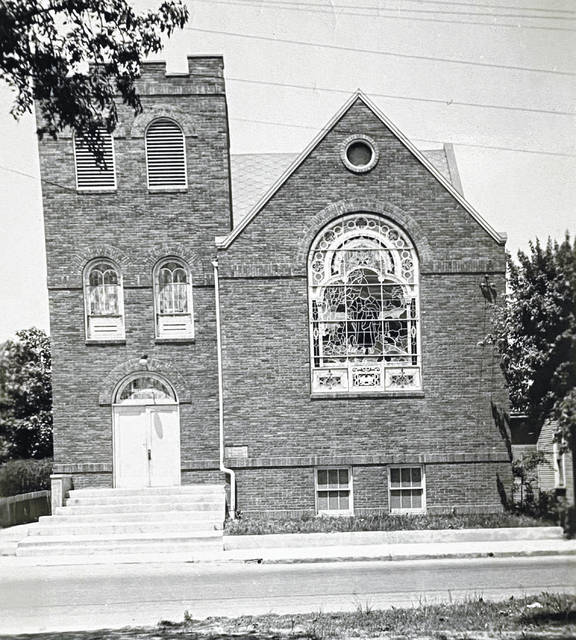
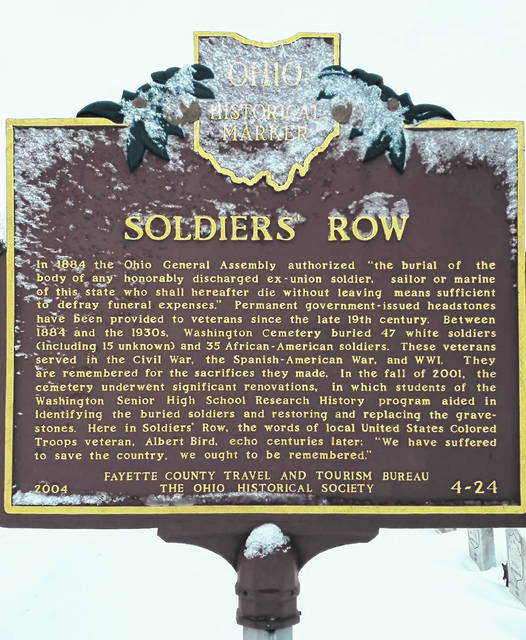
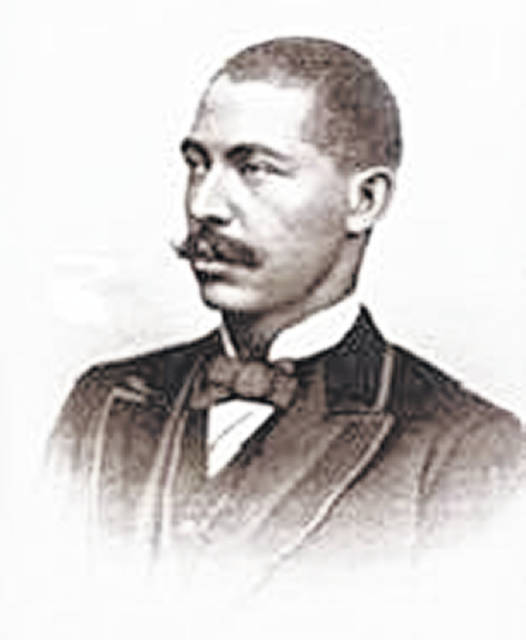
Throughout the month of February, the Fayette County Historical Society featured several chats and individuals via its social media page on Facebook. This is article one sharing those featured stories and individuals.
The information in this article came from the society Facebook page, “Fayette County Ohio Historical Society.”
Soldiers’ Row
Section 13, more popularly known as “Soldiers’ Row” in Washington Cemetery, was featured.
Local historian and retired educator Paul LaRue noted George Washington Williams was the first African-American elected to the Ohio General Assembly in 1880.
William Nelson served in the 55th Massachusetts (the sister regiment of the renowned 54th Massachusetts Volunteers).
The Jones family
Members of the Jones family were featured—Lawrence D. Jones and his wife, Elsie (Beatty) Jones.
Mr. Jones, born on May 26 of 1903, was a contractor of cement and worked at Cudahy’s Packing Company until his retirement in 1967—nine years after losing his wife in July of 1958.
Mr. Jones loved building furniture and the restoration of antiques. He, himself, passed on July 12, 1985 in Washington Court House.
Also of great interest, Mr. Jones’ father, Spencer Jones, born in March of 1853 and his mother, Sophia, farmed 10 acres just outside of Washington Court House. Raising peas for the Washington Canning Factory, Spencer once held the record for largest harvest of this crop per acre: some 2, 1/2 tons per acre, or 25 tons.
He also invented a liniment (lotion for the relief of pain) which he named “Wa-Hoo-Bam,” known to cure arthritis. In the early 1900s, he sold his formula for $300 (roughly $9,500 in today’s money). At this time, the name was changed boasting his surname to “Jones Liniment.”
Mr. and Mrs. Spencer Jones had three grandchildren from the union of their son Lawrence and his wife, Sophia — two of which currently reside in Washington Court House: twin sisters Clarabelle (Jones) Yelletts and Maybelle Jones.
Second Baptist Church
The Second Baptist Church of Washington Court House was highlighted.
The Second Baptist was organized 166 years ago on the 12th day of June 1855. Originally known as “The Second Union Anti-Slavery African Baptist Church,” upon its inception it only held three active members.
The original lot was gained three years later in 1855 with the original structure built of logs and residing on North Street near the Washington Senior High building (later the Washington Middle School).
Five years later in 1863, a newer, brick church was built and would serve its congregation for the better part of the next 60 years.
The church building known today will turn 100 years very soon. Its cornerstone was placed in the waning days of June, 1921 and the building would be completed 18 months later.
On the afternoon of July 2, 1921, during the dedication ceremony, a letter from President Warren G. Harding was read by U.S. Senator Charles D. Fess.
Reverend Charles C. Hart was the first pastor of this building. The current pastor, Eugene Lester Sanders, has led the congregation since April of 2001. Pictured are he and his wife, Denise.
West and Beatty—intertwined
Have you ever heard of Augustus “Gus” West? What about Alexander Beatty?
There is a remarkable story that intertwined the lives of these two men.
Beatty, an abolitionist, came to Fayette County in 1825. Over time, he made the acquaintance of Augustus West who moved to Ohio in 1837. The two became acquaintances and in time devised a scheme to turn a profit by traveling south posing as slave and slave peddler.
The two made a minimum of three trips under this ruse, one said to have garnered a monetary gain of $1,700 (roughly equivalent to $50,000 in today’s money).
Put quite simply, Beatty would sell the rights of West, with the knowledge that West would then travel back to Ohio, with assistance being provided by Beatty, where he and Beatty would share the monetary gain equally.
In time, both became wealthy and used said gains to both fund freedom for other slaves as well as the construction of what was said to be a “mansion” for West.
Ultimately, the two became neighbors as West’s “mansion” was built upon 177 acres he purchased from that of Beatty.
West would himself be known as an abolitionist, working himself toward the freedom of other African-Americans.
Over time, other free black families would make their homes in cabins on these 177 acres, along a lane that would later be referred to as “Abolition Lane.” Thus, such would “probably represent the [very] first African-American community in Fayette County.”
Albert Bird
Albert Bird was a member of the William Anderson Post 244, Grand Army of the Republic.
Born in Virginia in 1847, at 17 years of age Bird enlisted in the Union Army on September 22, 1864. After his service expired, he was discharged on April 7, 1866.
Of several places he would call home, one of them happened to be that of Washington Court House. He worked as both a general laborer and a house cleaner.
He once wrote, “I work about houses … something light … being a poor old broken down soldier, I do the best I can.”
In 1891, Bird served as Post Commander for the William Anderson G. A. R. Post 244.
Prior to his death on May 25, 1894, Mr. Bird was credited with saying “… we (African-American soldiers) have suffered to save the country, we ought to be remembered.”
The information on Bird is credited to Paul LaRue and the collected work of the 2000 and 2005 research history classes at Washington High School.
Reach Jennifer Woods at 740-313-0355.







